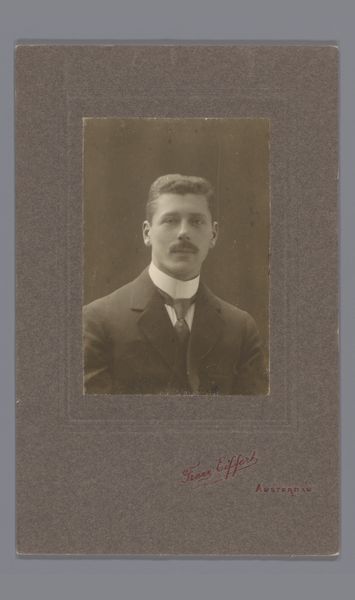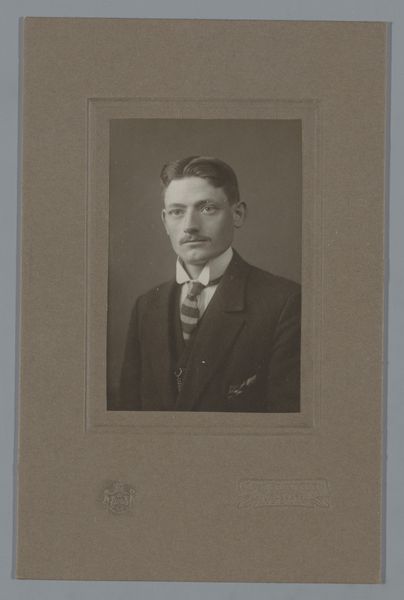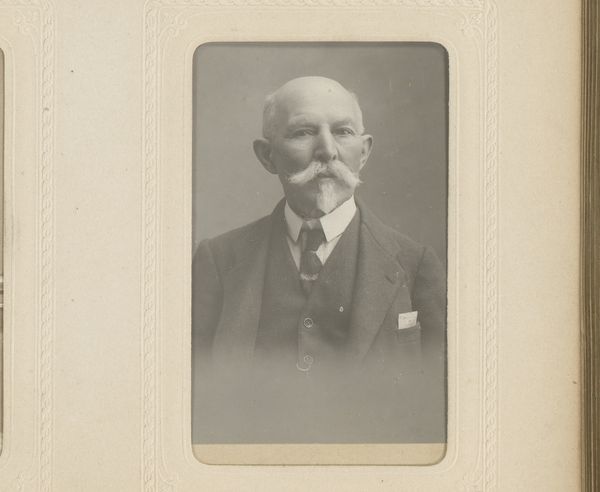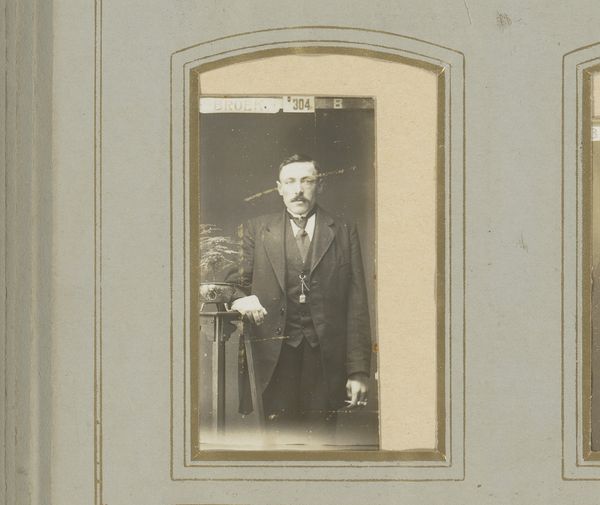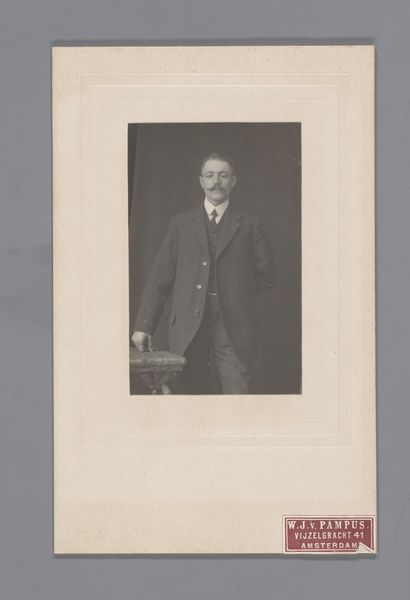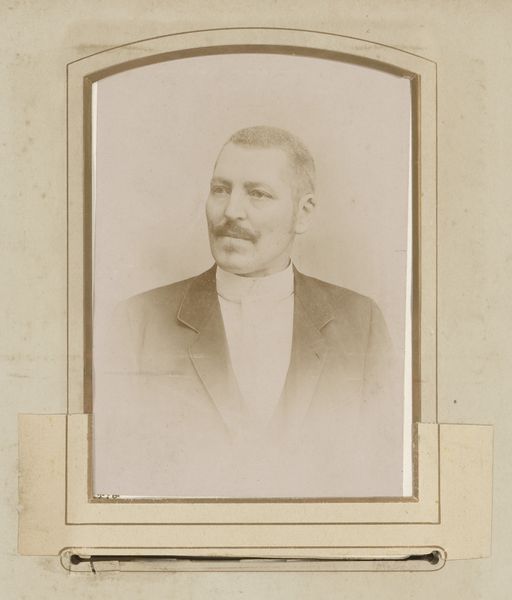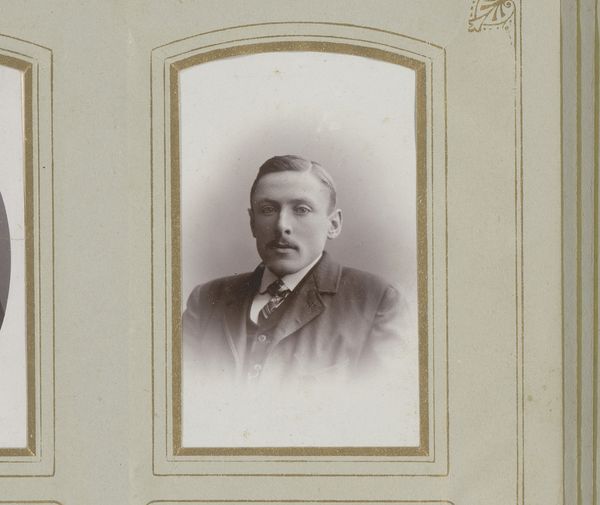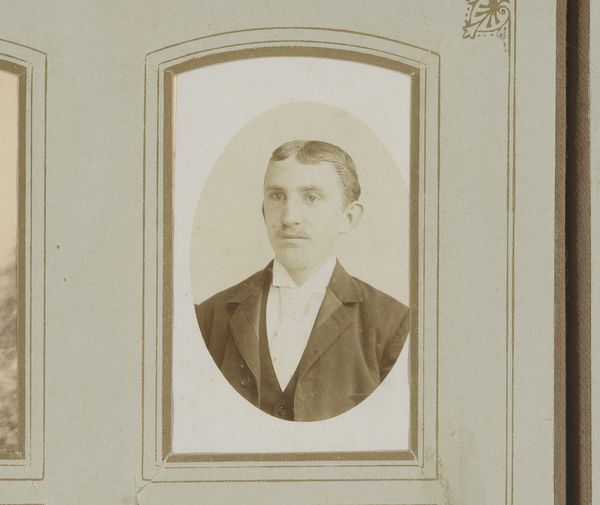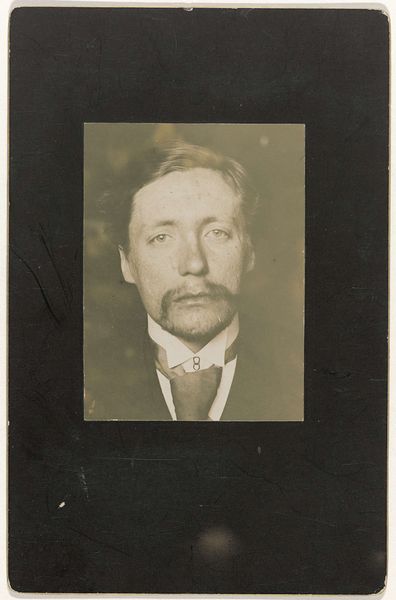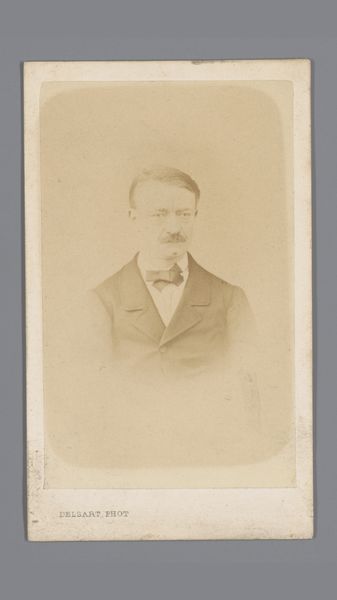
print, daguerreotype, photography
#
portrait
# print
#
daguerreotype
#
photography
#
realism
Dimensions: height 80 mm, width 75 mm, height 178 mm, width 125 mm
Copyright: Rijks Museum: Open Domain
Curator: This daguerreotype, believed to have been created sometime between 1860 and 1915, bears the name "Willem Witsen." It is rendered with surprising detail given the constraints of the era. Editor: It's remarkable how such an intimate image can be captured through early photographic techniques. I’m immediately struck by its ghostly quality, the ethereal tonality seems fitting for remembrance. Curator: Daguerreotypes, early photographs developed on silver-plated copper, hold significant cultural weight. They were objects of status and remembrance. The formal pose suggests the sitter desired a certain representation, perpetuating a legacy of civic responsibility, much like portraits of Roman officials in antiquity. Editor: Indeed, observe how the subdued palette contributes to the sense of gravity. The tight cropping of the subject, however, directs our attention straight into his character. Curator: Quite, I can see a narrative of stoicism etched in this sitter’s gaze. The high collar and dark suit speak to prevailing fashion norms and societal codes of dress during that epoch—all while acting as signifiers of economic class and professional stature. Editor: Yes, the careful placement of shadows articulates and almost sculpts the subject’s countenance. One can tell how meticulous the artist was in framing this face to be highlighted and remembered. Curator: Exactly. Such a photo also holds implicit codes for posterity—visual prompts invoking nostalgia for what was familiar or valued at this time. His very composed presence in the daguerreotype echoes sentiments attached with idealized, eternalized family portraits hung above mantlepieces in countless Victorian homes. Editor: Looking closer at the composition I see the almost symmetrical distribution of dark masses in the frame, balanced to lead your eye always toward the subtly lighter complexion of his face. What better semiotic indicator to establish importance of figure over context? Curator: Absolutely, this isn't merely a representation of a man; it's an encapsulation of an era's aspirations and beliefs. What powerful encoding contained in a single image! Editor: A rather haunting experience overall—but a strong compositional achievement regardless!
Comments
No comments
Be the first to comment and join the conversation on the ultimate creative platform.
